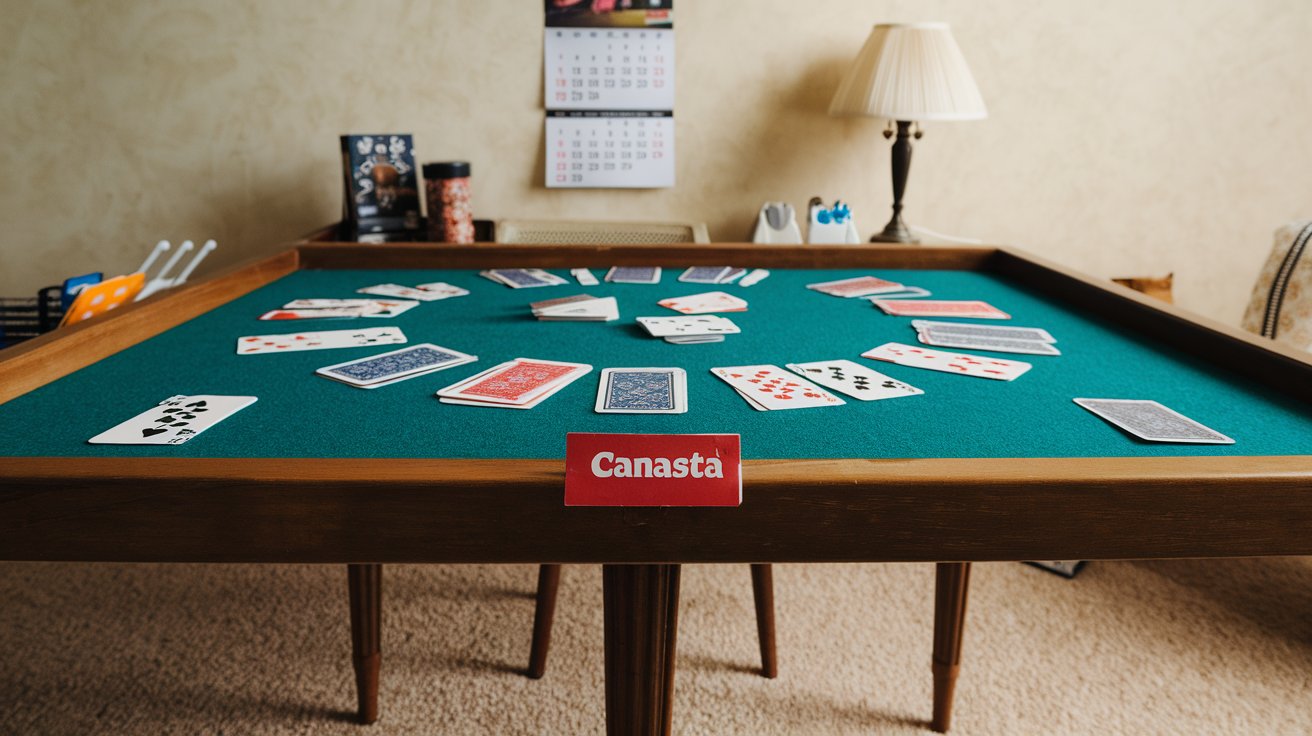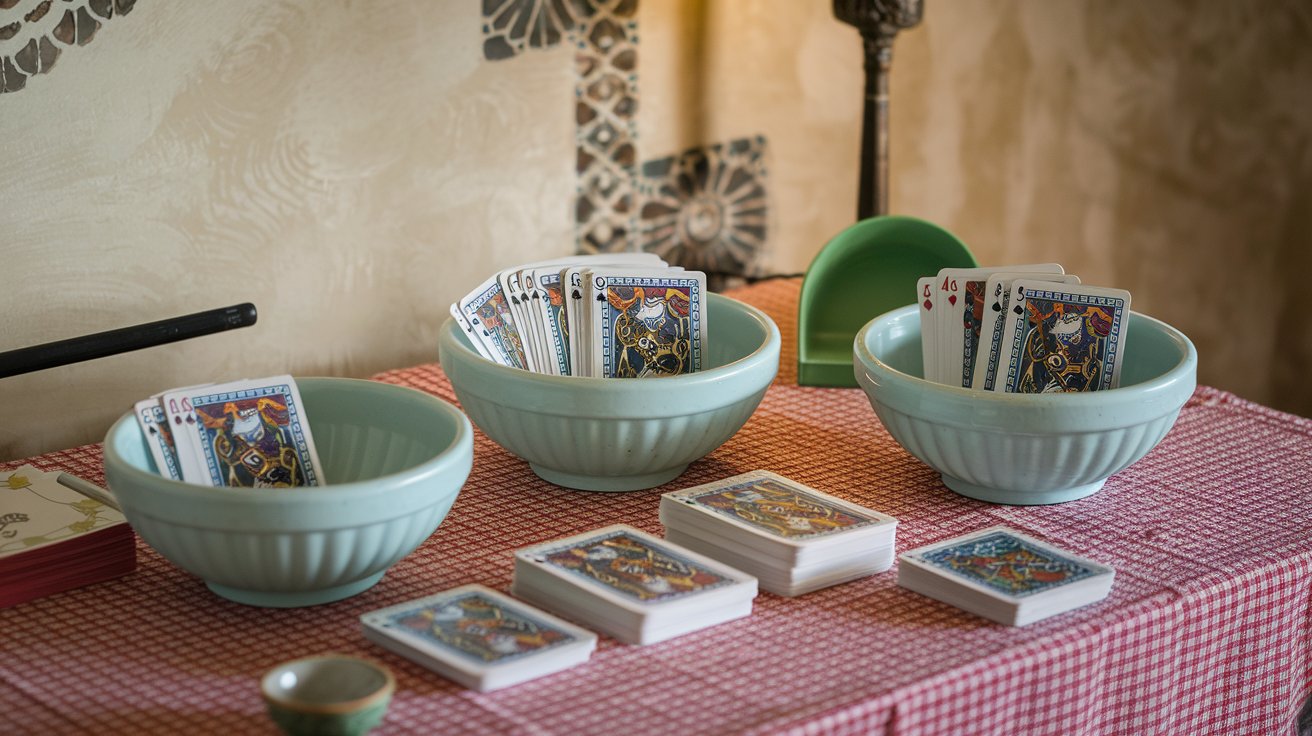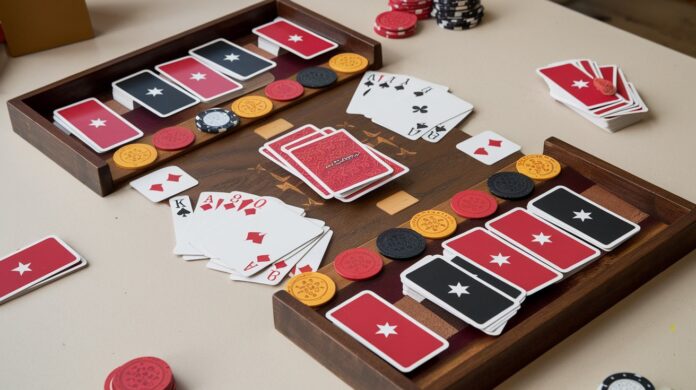Canasta, a card game that captivated America in the 1950s, remains one of the most sophisticated and entertaining rummy variants played worldwide. With its rich blend of strategy, skill, and social interaction, Canasta offers a deeply rewarding experience for card game enthusiasts. Whether you’re looking to expand your card game repertoire or searching for a new favorite game night activity, Canasta delivers an engaging challenge that keeps players coming back for more.
In this comprehensive guide, we’ll explore everything you need to know about Canasta—from its fascinating origins and basic rules to advanced strategies that can help you dominate your next game. We’ll demystify the unique elements that distinguish Canasta from other rummy games and provide you with the knowledge to confidently join or host a Canasta game.
The Origins of Canasta

Canasta’s story begins in Uruguay in the late 1940s. The game was invented by Segundo Santos and Alberto Serrato, who sought to create a challenging rummy variant that would appeal to dedicated card players. The name “Canasta” comes from the Spanish word for “basket,” referring to the game’s central goal of creating large card combinations.
The game spread rapidly throughout South America before making its way to the United States, where it sparked what many call the “Canasta Craze” of the 1950s. During this period, Canasta sets were bestsellers, books on Canasta strategy topped bestseller lists, and Canasta clubs formed across the country. Though its mainstream popularity has fluctuated over the decades, Canasta has maintained a dedicated following and continues to be enjoyed by millions around the world.
What Makes Canasta Special?
Before diving into the rules, it’s worth understanding what makes Canasta stand out among card games:
- Partnership Play: While Canasta can be played with 2-6 players, the classic version is played with four players in partnerships, creating an engaging team dynamic.
- Meld Building: The game centers around creating and expanding “melds” (sets of cards of the same rank).
- Canastas: The ultimate goal is to form special melds called “canastas” – seven or more cards of the same rank.
- Wild Cards: The extensive use of wild cards (jokers and 2s) adds strategic depth and variability.
- Freezing the Discard Pile: Unique mechanics around the discard pile create strategic tension and dramatic swings in gameplay.
- Complex Scoring: A nuanced scoring system rewards strategic thinking and risk management.
Basic Equipment for Canasta
To play Canasta, you’ll need:
- Two standard 52-card decks with jokers (totaling 108 cards)
- Score pad and pencil
- A large table with enough space for melds and discard piles
- Preferably a card tray to hold the draw pile
Many dedicated players use specialized Canasta sets, which include pre-packaged double decks and score sheets designed specifically for the game.
How to Play Canasta: The Basic Rules
Game Setup
- Partnerships: In a four-player game, players sitting opposite each other form partnerships. Partners combine their melds and scores.
- Card Values:
- Jokers = 50 points each
- Aces and 2s = 20 points each
- Kings through 8s = 10 points each
- 7s through 4s = 5 points each
- 3s (natural) = 5 points each (with special functions, explained later)
- Black 3s = 5 points (penalty)
- Red 3s = Special bonus cards
- The Deal: Deal 11 cards to each player. Place one card face up to start the discard pile and the remaining cards face down as the draw pile.
Natural Cards vs. Wild Cards

- Natural Cards: All cards except jokers and 2s
- Wild Cards: Jokers and 2s can be used to substitute for any natural card in a meld (with restrictions)
- Black 3s: Have special blocking properties
- Red 3s: Are immediately replaced and count as bonus points
The Goal
The primary goal is to score points by:
- Creating melds of three or more cards of the same rank
- Forming canastas (seven or more cards of the same rank)
- Going out (using all your cards)
Gameplay Flow
- Drawing: Begin your turn by drawing two cards from the stock pile OR taking the entire discard pile (subject to specific rules).
- Melding: Place valid sets of at least three cards of the same rank on the table.
- Adding to Melds: Add cards to your existing melds or your partner’s melds.
- Discarding: End your turn by discarding one card face up on the discard pile.
Types of Melds and Canastas
- Pure Canasta (Natural Canasta): Seven or more natural cards of the same rank with no wild cards (red border in traditional sets) – 500 points
- Mixed Canasta: Seven or more cards of the same rank including at least one wild card (black border) – 300 points
- Regular Meld: Three to six cards of the same rank
Special Cards and Rules
- Red 3s: Immediately placed face up when drawn and replaced with another card. Each red 3 is worth 100 points, and having all four red 3s earns an additional 400-point bonus (for a total of 800 points).
- Black 3s: Cannot be melded normally. When discarded, they “freeze” the discard pile, making it harder for opponents to pick up.
- Wild Cards: A meld cannot contain more wild cards than natural cards, and you cannot make a meld of only wild cards.
Taking the Discard Pile

This is one of Canasta’s most strategic elements. To take the discard pile:
- You must use the top card in a new or existing meld (not by discarding it again).
- If the discard pile is “frozen” (contains a wild card or black 3), you need two natural cards of the same rank as the top card in your hand to take the pile.
Going Out
To “go out” (end the hand), a player or partnership must:
- Have at least one canasta completed
- Have no cards remaining in hand after discarding
Scoring
At the end of each hand, points are calculated:
- Add the value of all melded cards
- Add bonuses for canastas and red 3s
- Subtract the value of any cards left in hand
- Add a bonus for going out (100 points)
The game continues until one partnership reaches a predetermined score (typically 5,000 points).
Advanced Canasta Strategy
Now that we understand the basics, let’s explore some more advanced strategies that can elevate your Canasta game.
Early Game Strategy
In the early phase of each hand, focus on:
- Hand Assessment: Quickly identify which ranks you have multiples of, as these are promising for future melds.
- Wild Card Management: Resist the urge to use wild cards too early. Save them for completing canastas or creating critical melds later.
- Discard Safety: Avoid discarding cards that might help opponents create or extend melds. Cards like 4s, 5s, and high-value cards are often safer discards early on.
- Red 3 Collection: Drawing red 3s early can provide a points advantage, though they don’t help with gameplay.
Mid-Game Tactics
As the hand progresses:
- Freezing the Pile: Strategically discard black 3s to freeze the discard pile when it contains cards your opponents want.
- Pile Monitoring: Keep track of what’s in the discard pile and its potential value to you or opponents.
- Partnership Communication: Through your melds and discards, indirectly communicate to your partner which ranks you’re collecting.
- Defensive Play: If opponents are close to going out, consider holding back cards they need rather than melding them.
Late Game Winning Moves
As the end of the hand approaches:
- Canasta Completion: Prioritize completing at least one canasta, which is required to go out.
- Hand Reduction: Work toward reducing your hand size while maintaining flexibility.
- Controlling Go-Out Timing: Sometimes it’s better to delay going out if you can create additional canastas or prevent opponents from melding high-value cards.
- Discard Selection: Be extremely careful with your final discards, as they can make the difference between winning and losing.
Wild Card Strategy
Wild cards represent one of the most nuanced aspects of Canasta strategy:
- Concentration vs. Distribution: Decide whether to concentrate wild cards in a few melds or distribute them across many melds.
- Pure Canasta Planning: Reserve some sets for potential pure canastas (without wild cards) for their higher point value.
- Wild Card Trapping: Sometimes discarding a card adjacent to a wild card can trap that wild card in the discard pile, preventing opponents from using it.
Common Variations of Canasta
Over the years, numerous Canasta variations have emerged. Here are some of the most popular:
Hand Canasta (Samba)
This variation adds a third meld type: sequences of the same suit (similar to traditional rummy runs). These “sambas” add another layer of strategic complexity.
Modern American Canasta
Features initial melds with point-value requirements that increase as your score increases, similar to the system used in Contract Bridge.
Cuban Canasta (Havana Canasta)
A faster-paced version with simplified rules, making it more accessible to beginners while retaining the core strategic elements.
Classic Two-Player Canasta
Adjusted rules for two players, often with each player drawing and playing as if they were a partnership.
Bolivia (Wild Card Canasta)
A challenging variation that requires specific canastas of different types before going out, including a canasta of only wild cards.
Common Mistakes to Avoid
Even experienced players can fall into these traps:
- Using Wild Cards Too Early: Depleting your wild cards on basic melds rather than saving them for canastas.
- Ignoring the Freeze: Failing to leverage the strategic potential of freezing the discard pile.
- Poor Discard Management: Discarding cards that help opponents rather than cards that block their progress.
- Premature Melding: Creating melds too early can reveal your strategy to opponents and limit your flexibility.
- Partnership Disconnection: Not paying attention to your partner’s melds and discards, resulting in misaligned strategies.
The Social Aspect of Canasta
Beyond the rules and strategy, Canasta’s enduring appeal lies in its social dimension:
- Partnership Dynamics: The teamwork aspect creates natural conversation and bonding opportunities.
- Cross-Generational Appeal: The game’s blend of luck and skill makes it enjoyable across age groups, making it perfect for family gatherings.
- Pace of Play: The moderate pace allows for conversation while maintaining engagement with the game.
- Tournament Culture: Canasta tournaments and clubs provide communities for dedicated players to connect and compete.
Modern Canasta: Digital Adaptations
In the digital age, Canasta has found new life:
- Mobile Apps: Several quality Canasta apps allow players to enjoy the game against AI or online opponents.
- Online Card Game Platforms: Websites dedicated to card games often feature Canasta with various rule customizations.
- Video Tutorials: YouTube and other platforms host instructional videos that have introduced Canasta to new generations.
- Virtual Card Clubs: Online communities dedicated to Canasta help maintain interest and provide playing opportunities.
Why Learn Canasta Today?
With countless entertainment options available, why should modern card players invest time in learning Canasta?
- Cognitive Benefits: The strategic thinking, memory work, and pattern recognition required in Canasta provide excellent mental exercise.
- Social Connection: In an increasingly digital world, face-to-face card games offer authentic social interaction.
- Skill Development: Canasta builds transferable skills applicable to many card games and strategic thinking in general.
- Competitive Depth: For those who enjoy competition, Canasta offers nearly limitless strategic depth to master.
- Accessibility: Despite its strategic complexity, Canasta remains accessible to beginners and enjoyable at all skill levels.
Conclusion: The Enduring Appeal of Canasta
From its origins in 1940s Uruguay to its global popularity today, Canasta has proven itself as one of the most engaging and enduring card games ever created. Its perfect balance of luck, skill, and social interaction continues to attract new players while maintaining a dedicated base of enthusiasts.
Whether you’re looking to revisit a classic game from your past, seeking a new challenge for game night, or wanting to connect with the rich tradition of partnership card games, Canasta offers rewarding experiences that few other games can match. With the rules and strategies outlined in this guide, you’re well-equipped to join the millions of players who have discovered the unique satisfaction of forming that perfect canasta and declaring “out” to the delight of your partner and the dismay of your opponents.
So gather your cards, find a partner, and discover for yourself why this basket-named game has captured the hearts and minds of card players for generations.

Zareb Saleh is a journalist at Gulf Today and a ghostwriter for Gameoholic, specializing in gaming, technology, and digital culture. With a keen eye for industry trends, he delivers insightful stories that engage and inform readers.




